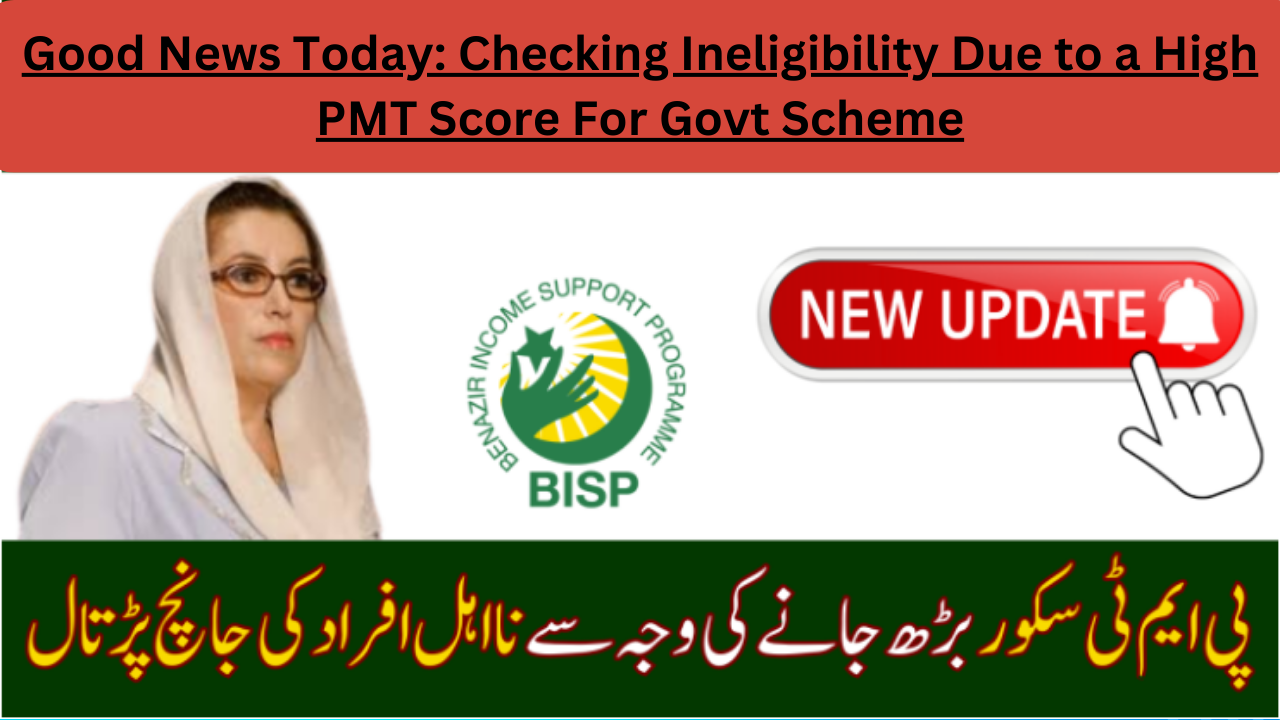Good News Today: Checking Ineligibility Due to a High PMT Score For Govt Scheme
Sure, here’s a draft of the article for you:
**Good News Today: Checking Ineligibility Due to a High PMT Score For Government Schemes**
In recent times, there has been an increasing focus on the efficiency and transparency of government welfare schemes in India. Among the various tools employed by the government to ensure that benefits reach the intended beneficiaries, the Poverty Monitoring Tool (PMT) score plays a crucial role. However, a high PMT score can sometimes lead to ineligibility for certain government schemes, raising concerns among citizens. Let’s delve into what a high PMT score means and how it affects eligibility for government schemes.
Understanding the PMT Score
The Poverty Monitoring Tool (PMT) score is a metric used by the government to assess the economic status of households. It is a composite index derived from various socio-economic indicators such as income, property ownership, education levels, and access to basic amenities. The score is designed to help identify households that are in genuine need of government assistance.
A lower PMT score indicates a higher level of poverty, making the household eligible for a range of government welfare schemes such as subsidies, scholarships, and social security benefits. Conversely, a higher PMT score suggests that the household is relatively better off, which might render them ineligible for certain schemes.
The Impact of a High PMT Score
While the intention behind the PMT score is to ensure that benefits reach those who need them most, a high score can sometimes lead to unintended consequences. Households that are on the borderline of eligibility may find themselves excluded from vital schemes due to a slightly higher PMT score. This can be particularly challenging for families who are struggling to make ends meet but do not meet the stringent criteria for assistance.
For instance, a family with a high PMT score may not qualify for food subsidies under the Public Distribution System (PDS), despite having limited financial resources. Similarly, students from such households may be deemed ineligible for scholarships, thereby limiting their access to quality education.
Reassessing Ineligibility: A Ray of Hope
The good news is that the government is increasingly recognizing the need for flexibility and fairness in the implementation of welfare schemes. There are mechanisms in place for households to appeal their PMT score or request a reassessment of their eligibility status. In some cases, discrepancies in the data used to calculate the PMT score can be rectified, leading to a more accurate assessment of a household’s economic situation.
Additionally, the government is exploring ways to make the PMT scoring system more dynamic and reflective of real-time economic conditions. For example, temporary financial setbacks such as job loss or medical emergencies could be taken into account when determining eligibility for schemes, ensuring that no household is unfairly excluded.
The Role of Awareness and Advocacy
One of the key factors in addressing ineligibility due to a high PMT score is awareness. Many households are unaware of their rights to appeal or request a reassessment of their PMT score. Community-based organizations and social workers play a vital role in educating citizens about these processes and advocating on their behalf.
Moreover, the government is working to improve the transparency and accessibility of the PMT scoring process. Online portals and help centers have been set up to assist households in checking their PMT score and understanding the criteria for various schemes. By making this information readily available, the government aims to empower citizens to take proactive steps in ensuring their eligibility for essential services.
Conclusion: Striving for a Balanced Approach
In conclusion, while a high PMT score can lead to ineligibility for certain government schemes, it is heartening to see that there are mechanisms in place to address these challenges. The government’s efforts to reassess and refine the PMT scoring system, coupled with increased awareness and advocacy, are positive steps toward ensuring that no household is left behind.
As we move forward, it is essential for the government to continue refining its tools and processes to strike a balance between efficiency and fairness. By doing so, we can ensure that government welfare schemes truly serve the purpose for which they were designed—uplifting those who need it the most.
Feel free to suggest any adjustments or additional points!

